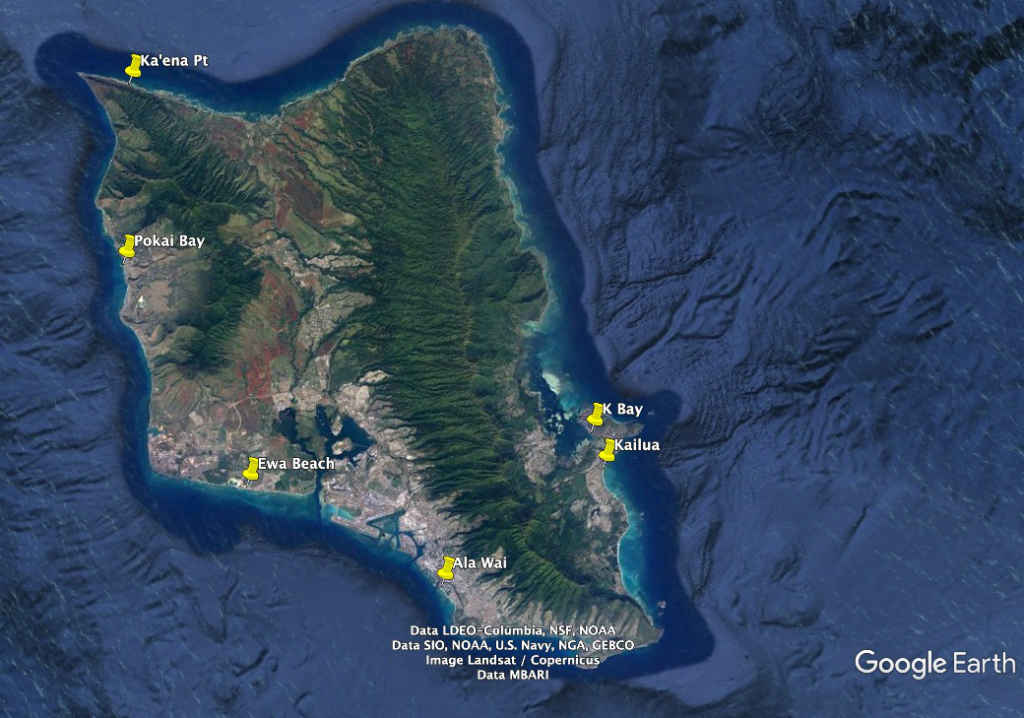Aloha! The Callie Mae Sea Foundation conducted a small-scale microplastics sampling study at six O’ahu beaches in April/May 2021, and we wanted to share some of our preliminary study results with you! The map below (Figure 1) shows our six sampling locations, which you can see are spread out along the coast of O’ahu. One location (Ka’ena Pt.) is a marine reserve so we hypothesized there would be less microplastics at this sampling location versus the other beaches which are less isolated. Two locations (K-Bay and Kailua) are on the windward or East side of O’ahu, while two other locations (Pokai Bay and Ewa Beach) are on the leeward or West side of O’ahu. There was one sampling location in urban Honolulu (Ala Wai).

At each of the six sampling locations, 30 water samples were collected to analyze for microplastics. The samples were filtered via vacuum pump and then the filters were analyzed under 40x magnification to detect microplastics. The average and standard deviation of microplastics counts were calculated for each sampling site. These filters were then sent to 30 Marine Conservation students on the mainland so they could learn how to identify microplastics as well.
Results showed the highest average number of microplastics samples were seen at Pokai Bay on the leeward side of O’ahu (Figure 2). The lowest average number of microplastics was seen at Ka’ena Point Marine Reserve, which we originally hypothesized would have the lowest number of microplastics due to its isolated location. Samples contained primarily microfibers (Figure 3) and microfragments (Figure 4).

Figure 2. Bar graph depicting the average number of microplastics seen at the six sampling locations.


Overall this small scale study was very eye opening, and we saw a lot more microfibers in the water samples than we anticipated. We continue to monitor these locations for microplastics in order to construct a longer time series to see if the number of microplastics is increasing in O’ahu beach water. We are so thankful to the support of our donors, who have allowed us to conduct this research and try to protect our fragile yet marvelous marine ecosystems.


16 thoughts on “Exciting New Microplastics Sampling Research”
This is interesting and sad at the same time that our marine life are living in this pollution. Thank you for this vital research.
I like to help the marine life
I like to help the marine life